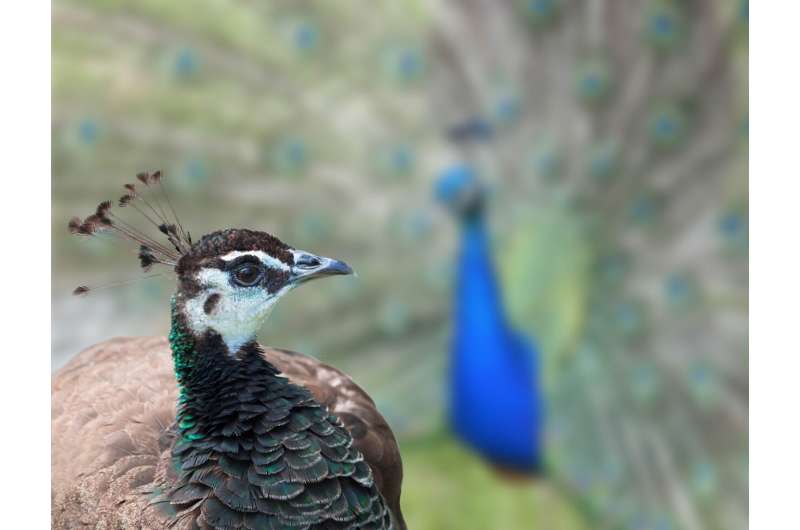This article has been reviewed according to Science X's editorial process and policies. Editors have highlighted the following attributes while ensuring the content's credibility:
fact-checked
peer-reviewed publication
trusted source
proofread
Female animals may learn mate preferences based on other more experienced females' choices

Females may infer what makes a male attractive by observing the choices of more experienced females, and the context of those choices matters, according to a mathematical model published October 3rd in the open access journal PLOS Biology. Rather than simply copying their peers, females might learn to prefer rare traits that set successful males apart from others, Emily DuVal at Florida State University, US, and colleagues report.
Sexual selection—where traits become more common because of their attractiveness to the opposite sex—can produce strange and elaborate characteristics, such as huge antlers, bright plumage, and flamboyant courtship dances. However, exactly why females prefer certain traits over others is poorly understood.
Female preferences in a given population often change across generations, and sometimes preferences differ among individuals within one population. Existing theories suggest that females prefer traits indicating genetic quality; that male traits and female preferences are linked in a positive feedback loop; or that females' senses bias them towards certain traits. But no theory fully explains the variety of traits and preferences seen in nature.
To address this, researchers developed a mathematical model in which females learn which traits are attractive by watching others. In the model, young females observe the mate choices of adult females and learn to prefer traits that distinguish the chosen male from other males. In other words, females learned to prefer the rarest trait of a successful male, but this trait was not necessarily what the observed female was really choosing.
Over several generations, female preferences caused rare male traits to become more common, which then made them less attractive. This helped to maintain variation in male traits, rather than a single attractive trait out-competing the others.
The results of this mathematical model are consistent with several features of sexual selection in nature, such as rapid evolutionary changes, and the persistence of variation in male traits and female preferences. Animals use social information to make decisions in many contexts. Inferring the attractiveness of potential mates may be an extension of this general tendency, the authors say.
DuVal and her co-authors add, "While scientists have known for a long time that females can copy each other's choice of mates, no one has previously considered that these copying females aren't mind-readers. When we considered that females can make mistakes in identifying what traits others find attractive, we found this produces patterns that have long puzzled biologists, for example maintaining variety in male traits and female preferences over time."
More information: DuVal EH, Fitzpatrick CL, Hobson EA, Servedio MR (2023) Inferred Attractiveness: A generalized mechanism for sexual selection that can maintain variation in traits and preferences over time. PLoS Biology (2023). DOI: 10.1371/journal.pbio.3002269 , journals.plos.org/plosbiology/ … journal.pbio.3002269
Journal information: PLoS Biology
Provided by Public Library of Science




















